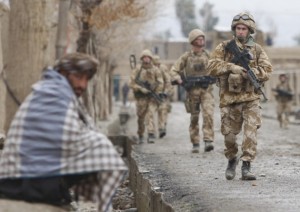Latest News
US to deploy hundred of additional troops to Helmand

Hundreds of additional US troops are slated to deploy to a volatile province inAfghanistan to bolster the local military against a resurgent Taliban, according to the Guardian News Agency.
The Guardian writes that by month’s end, a force described as battalion-strength, consisting of mostly army soldiers, will arrive in Helmand province where US and UK forces have struggled in battles for over a decade to drive out the Taliban.
In keeping with Barack Obama’s formal declaration that the US is not engaged in combat, despite elite forces recently participating in an hours-long battle in Helmand, defense officials said the additional troops would not take part in combat. But they will help the existing Helmand force defend itself against Taliban attacks, officials said.
US military officials declined to offer many specifics about an upcoming reinforcement, but they described the mission as primarily aimed at bolstering the performance of the embattled 215th Corps of the Afghan military, through training.
The 215th Corps has recently had its commander replaced amid performance and corruption concerns, and has endured “unusually high operating tempo for long periods of time”, outgoing US commander General John Campbell testified to Congress last week. It is among four Afghan corps that still have US military advisers embedded within it, despite a recent pullback to advise at higher levels.
“Our mission remains the same,” said Colonel Michael Lawhorn, a spokesman for the US command in Kabul, “to train, advise, and assist our Afghan counterparts, and not to participate in combat operations.”
The Guardian understands the additional forces in Helmand will not increase the current total troop numbers in Afghanistan, which currently stand at 9,800, but will instead be deployed from troops already in the country. Batallion strengths vary, but can constitute a force of up to 800 troops.
While new advisers make up a significant component of the additional forces, Lawhorn said that another mission of the reinforcement will be to “bolster force protection for the current staff of advisers”, suggesting a concern for the safety of the existing Helmand force amid major recent Taliban gains.
The US military has sounded warnings of a deteriorating situation in Afghanistan, in Helmand and beyond, that have prompted significant revisions in Obama’s war plans.
Already Obama has agreed to leave 5,500 troops in Afghanistan past the end of his presidency, but his newly confirmed commander, General John “Mick” Nicholson, told a Senate panel recently that increased insurgent violence will prompt him to re-evaluate troop requests, and left the door open to bolstering a force Obama has sought to draw down.
In January, a US special forces soldier died and two others were wounded as they assisted the Afghan military in repelling a Taliban assault in the province that lasted hours.
While the Pentagon initially resisted categorizing the battle as “combat”, press secretary Peter Cook called it a “combat situation, but [US troops] are not in the lead intentionally”, illustrating how the difference between combat and advisory missions can blur in practice.
Opium-rich Helmand has emerged as a Taliban priority, as most of its 2015 attacks focused on the province. Unlike earlier eras of the war, the Taliban have declined to take a winter break and have fought in the province all year.
The Taliban have come close to overrunning a district center in Helmand, Sangin, where more than 100 UK troops died during a war that has entered its 15th year, despite US airstrikes in late December. Kabul is said to control only three of Helmand’s 14 districts, including the provincial capital of Lashkar Gah.
Outgoing commander Campbell, testifying to Congress last week, said that while current rules of engagement prevented US troops who are not engaged in counter-terrorism raids from initiating fights with the Taliban, “I have no restrictions on providing force protection” for troops that train Afghans.
Lawhorn described the reinforcement as a “planned deployment of additional personnel”, but at least one congressional official contacted by the Guardian was unaware of the plan.
Source: The Guardian

Latest News
Minister of mines says minerals must be processed in Afghanistan before exported

Acting Minister of Mines and Petroleum Shehabuddin Delawar has said in a meeting with officials of a Chinese company that the export of raw minerals for processing abroad is no longer allowed.
He said the ministry will work with foreign mining companies as long as they also process the minerals in Afghanistan.
Delawar said this during a meeting with China’s state-owned company MCC Holoda, and Chinese officials from the company contracted to extract copper from Mes Aynak.
The Ministry of Mines and Petroleum said in a statement that MCC Holoda is one of the largest mining and processing companies in China for copper, lead and zinc.
According to the statement, the company has expressed an interest in investing in copper, lead and zinc mines in Afghanistan.
Delawar welcomed their interest and said there are lead and zinc mines in Bamyan, Kandahar and Ghor provinces, and if the company agrees to process minerals inside Afghanistan, the ministry will cooperate with it.
Delawar also discussed the Mes Aynak copper project and called for acceleration of work at the mine.
Latest News
Afghanistan Humanitarian Trust Fund report highlights problems tackled
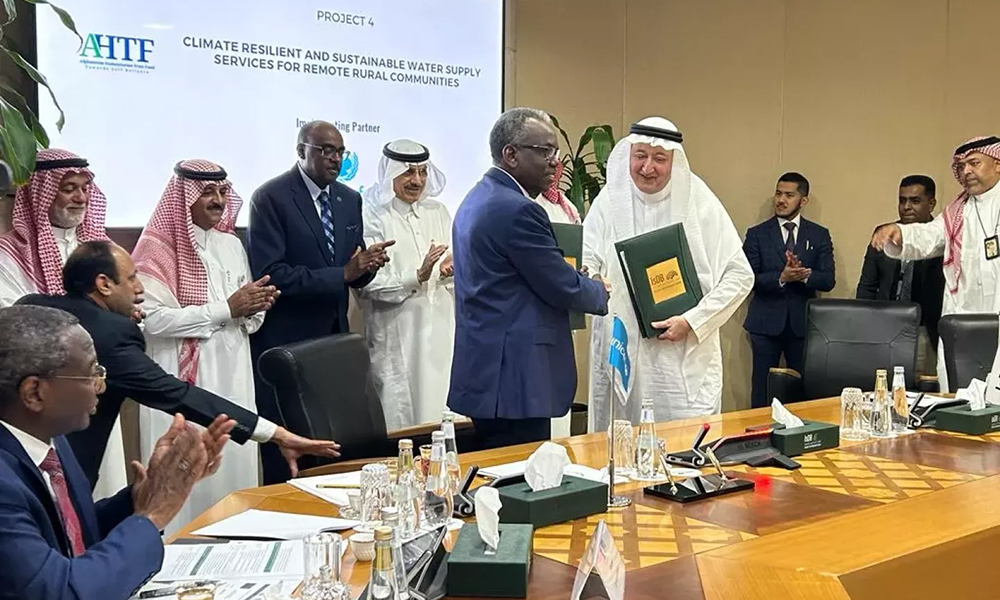
Mohammad Jamal Alsaati, Special Advisor to IsDB President and IsDB Coordinator for Afghanistan Humanitarian Trust Fund (AHTF), said this week that 14 projects, signed in 2023, have materialized at a total cost of $35.35 million.
He said in a statement issued Sunday that of this, $24.14 was from contributions from AHTF with a further $12.21 million provided by implementing partners and other international organizations.
Alsaati said all the services provided have created job and capacity building opportunities for the people of Afghanistan and that as of March 2024, pledges to the fund totaled almost $35 million, with more funding expected.
Alsaati’s comments were in a statement issued by the Islamic Development Bank, (IsDB), after it released the first comprehensive report on the achievements of the AHTF.
The report highlights the coordinated efforts by the IsDB, its partners, and stakeholders towards “Promoting Self Reliance and Resilience” in Afghanistan.
The AHTF’s mission is to provide initial humanitarian aid but then to prioritize development and self-reliance to move beyond emergency assistance – promoting reconstruction, empowerment and sustainable development.
IsDB President and Group Chairman, Muhammad Al Jasser meanwhile said following the release of the report that after receiving generous contributions, the AHTF “sprung into action, delivering essential aid to Afghanistan’s most vulnerable communities.”
He said the fund was able to tackle food insecurity, offer child nutrition programs, provide healthcare, innovative education, clean water, sanitation and hygiene services.
“Our projects are making a tangible difference on the ground,” Jasser said.
The Secretary General of the Organization of Islamic Cooperation (OIC), Hissein Brahim Taha also reacted to the report and said: “We are very pleased to see several humanitarian and development-focused projects are underway in Afghanistan – driven by the IsDB in collaboration with its regional and global partners.
“But much work still lies ahead, so we look forward to further help and support from our Member States, in addition to continued financial assistance for the AHTF from international aid and relief agencies,” said Taha.
The fund was established at a Council of Foreign Ministers of the OIC on 19th December 2021.
Latest News
Baradar visits Pashdan Dam, as work on project resumes
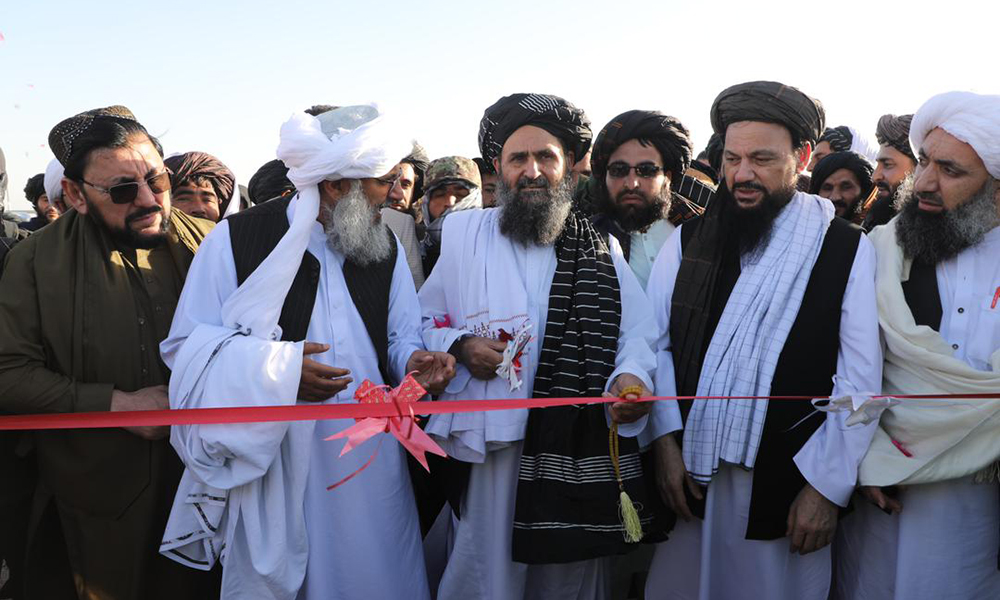
Mullah Abdul Ghani Baradar, deputy prime minister for economic affairs, has said the Pashdan Dam in Herat province is a key national project that the Islamic Emirate is committed to completing as soon as possible.
Speaking at an event marking the resumption of construction on this hydroelectric dam, which was started more than 10 years ago, Baradar said building dams was a priority for the Islamic Emirate.
Once complete the Pashdam Dam will not only generate electricity but also irrigate about 65,000 hectares of agricultural land, in turn providing work to thousands of people.
The dam will cost an estimated $117 million once finished and according to officials, at least 85% of work has been completed.
Officials expect the dam to be operational by the end of this solar year.
The construction of Pashdan Dam is being carried out by a domestic company in cooperation with an Azerbaijani company.
Engineers said the dam will mostly be used for agriculture purposes and for potable water. They also said about 73 kms of canals will be built to irrigate land.
This dam will store 54 million cubic meters of water. Currently, about 400 people are employed to work on the project.
-

 Sport3 days ago
Sport3 days agoAfghanistan beat Iraq 5-3, inch closer to Futsal World Cup berth
-
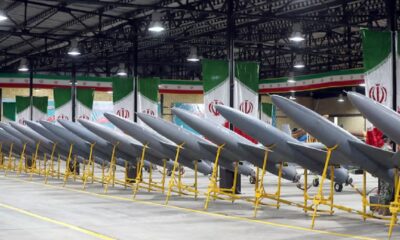
 Regional4 days ago
Regional4 days agoNew UK sanctions target Iranian drone industry
-

 Regional5 days ago
Regional5 days agoTurkey accuses U.S. of double standards over Gaza in rights report
-
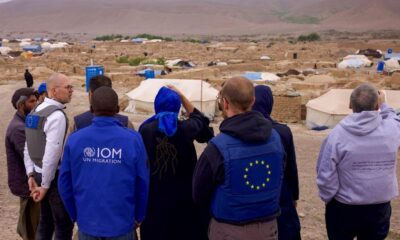
 Latest News4 days ago
Latest News4 days agoEU allocates 17 million euros to support Afghans on the move
-
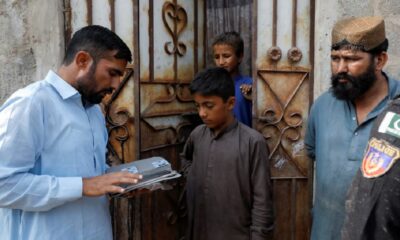
 Latest News3 days ago
Latest News3 days agoPakistan extends registered Afghan refugees’ stay till June 30
-

 World4 days ago
World4 days agoUS student protests over Gaza intensify despite arrests
-
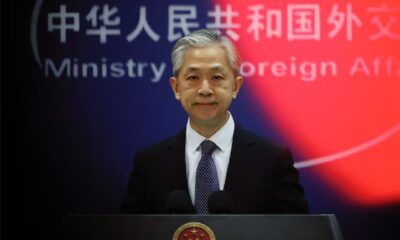
 Regional3 days ago
Regional3 days agoChina to host Hamas, Fatah for Palestinian unity talks
-

 Sport2 days ago
Sport2 days agoAfghanistan qualify for FIFA Futsal World Cup for first time ever

